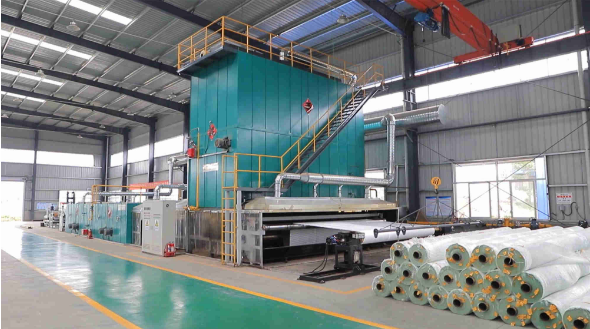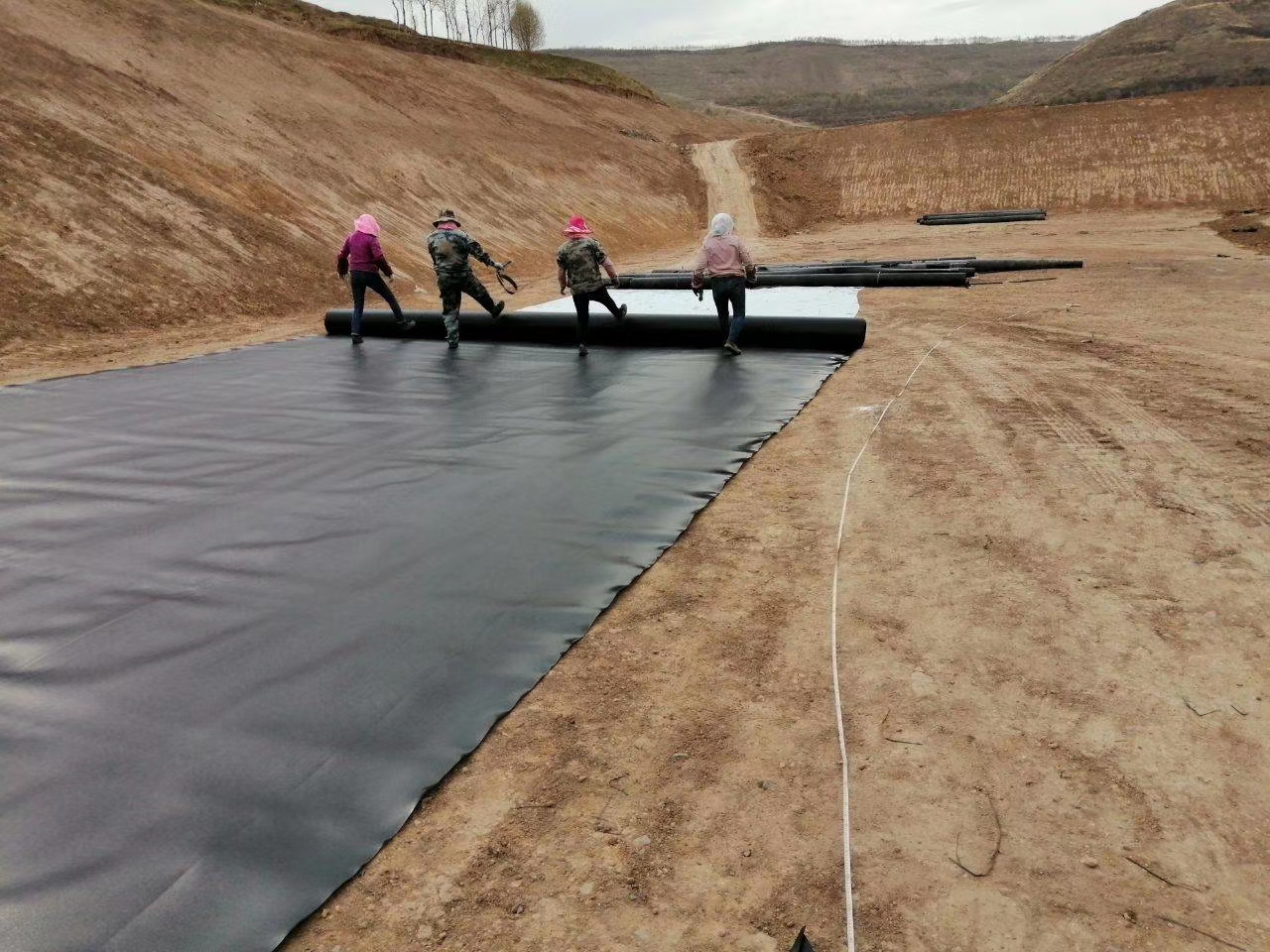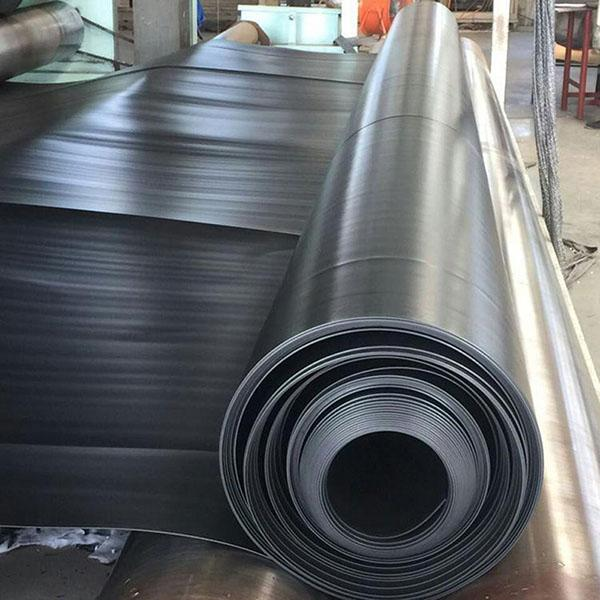After a large number of aquaculture cases, it is concluded that by laying it at the bottom of the pond, the water in the pond is isolated from the soil to achieve the purpose of preventing water seepage. It is an ideal solution to use high-strength polyethylene HDPE geomembrane as the bottom lining of the pond to prevent leakage.
The production technology of HDPE geomembrane has broken through the textile principle, and it uses modern scientific knowledge. Its processing method is to randomly arrange textile short fibers or filaments to form a fiber mesh structure.
During the laying of HDPE geomembrane, artificial wrinkles should be avoided as much as possible. When laying HDPE geomembrane, the expansion and contraction amount caused by temperature changes should be reserved according to the local temperature change range and the performance requirements of the HDPE geomembrane. In addition, the expansion and contraction amount of the geomembrane should be reserved according to the site terrain and geomembrane laying conditions. To adapt to the uneven settlement of the foundation.
The laying and welding construction of HDPE geomembrane should be carried out when the temperature is above 5℃, the wind force is below level 4, and there is no rain or snow. The hdpe geomembrane construction process is carried out in the following order: geomembrane laying → aligning welding seams → welding → on-site inspection → repair → re-inspection → backfilling. The overlap width of the joints between membranes shall not be less than 80 mm. Generally, the joint arrangement direction should be equal to the maximum slope line, that is, arranged along the slope direction.
After the hdpe geomembrane is laid, walking on the membrane surface, carrying tools, etc. should be minimized. Objects that can cause harm to the hdpe geomembrane should not be placed on the geomembrane or carried while walking on the geomembrane to avoid damaging the hdpe membrane. causing accidental damage. All personnel at the HDPE membrane construction site are not allowed to smoke, are not allowed to wear shoes with nails or high-heeled hard-soled shoes to walk on the membrane surface, and are not allowed to engage in any activities that may damage the anti-seepage membrane.
After the hdpe geomembrane is laid, before it is covered with a protective layer, a 20-40kg sandbag should be placed every 2-5m at the corners of the membrane to prevent the geomembrane from being blown up by the wind. HDPE geomembrane anchorage must be constructed according to the design. In places with complex terrain in the project, if the construction unit proposes other anchoring methods, it must obtain the consent of the design unit and the supervision unit before proceeding.
The role of composite geomembrane in road engineering with durability protection
1. The role of composite geomembrane in road engineering
1. Isolation effect
Placing the composite geomembrane between two different materials, between different grain diameters of the same material, or between the soil surface and the superstructure can isolate it. When the road surface is subject to external loads, although the material The composite geomembrane is pressed against each other under force, but because the composite geomembrane is separated in the middle, it does not mix or drain with each other, and can maintain the overall structure and function of the road base material. It is widely used in railways, highway subgrades, earth-rock dam projects, soft soil Basic processing and other projects.
2. Protective effect
Composite geomembrane can play a role in dispersing stress. When external force is transmitted from one object to another, it can decompose the stress and prevent the soil from being damaged by external force, thereby protecting the road base material. The protective function of the composite geomembrane is mainly to protect the internal contact surface, that is, the composite geomembrane is placed between two materials on the road base surface. When one material is subject to concentrated stress, the other material will not be damaged.
3. Reinforcing effect
The composite geomembrane has high tensile strength. When it is buried in the soil or at an appropriate location in the pavement structure, it can distribute the stress of the soil or pavement structure, transfer tensile stress, limit its lateral displacement, and enhance its connection with the soil or road. The friction between the structural layer materials increases the strength of the soil or pavement structural layer and geosynthetic material composite, thereby constraining the shape of the soil or pavement structural layer, inhibiting or reducing the uneven settlement of the soil, and improving the soil quality. Or the stability of the pavement structural layer has a reinforcing function.
Although composite geomembranes play many roles in road projects, they play different primary and secondary roles in different project locations. For example, when laying between the gravel base layer and the foundation of a highway, the isolation role is generally the main one, and the protection and reinforcement are It is secondary. When building roads on weak foundations, the reinforcing effect of the composite geomembrane can control the soil.
Post time: Oct-12-2023




